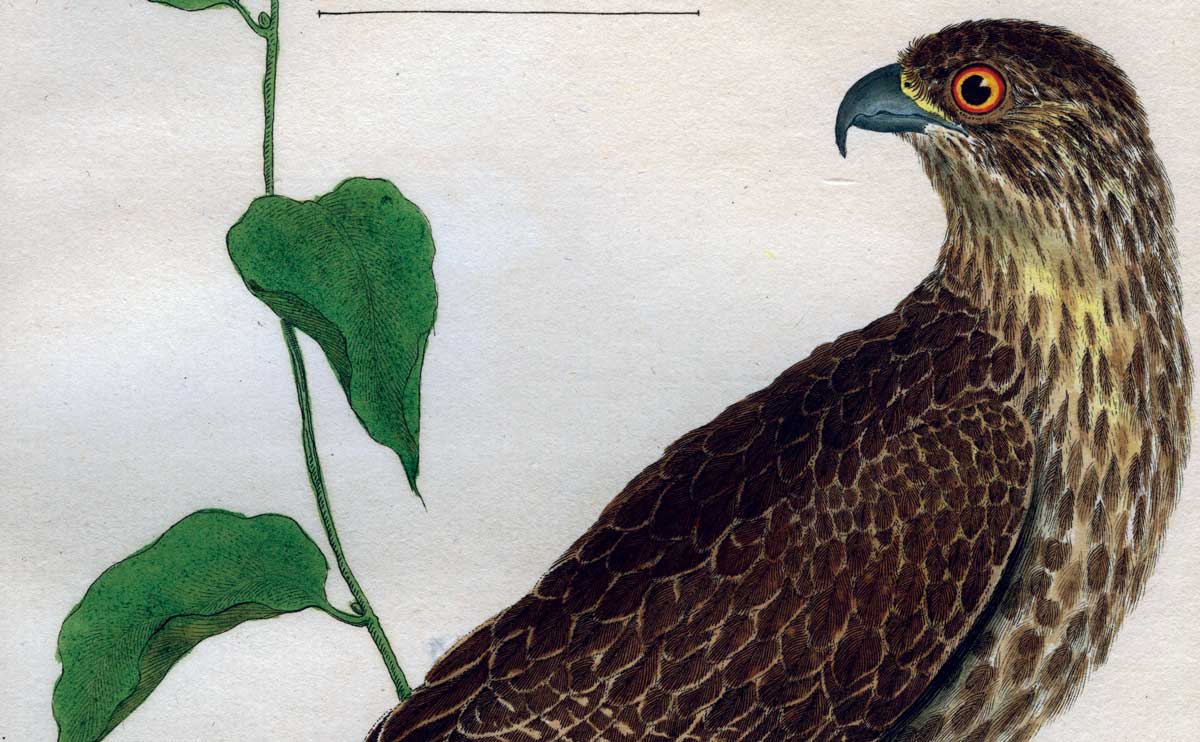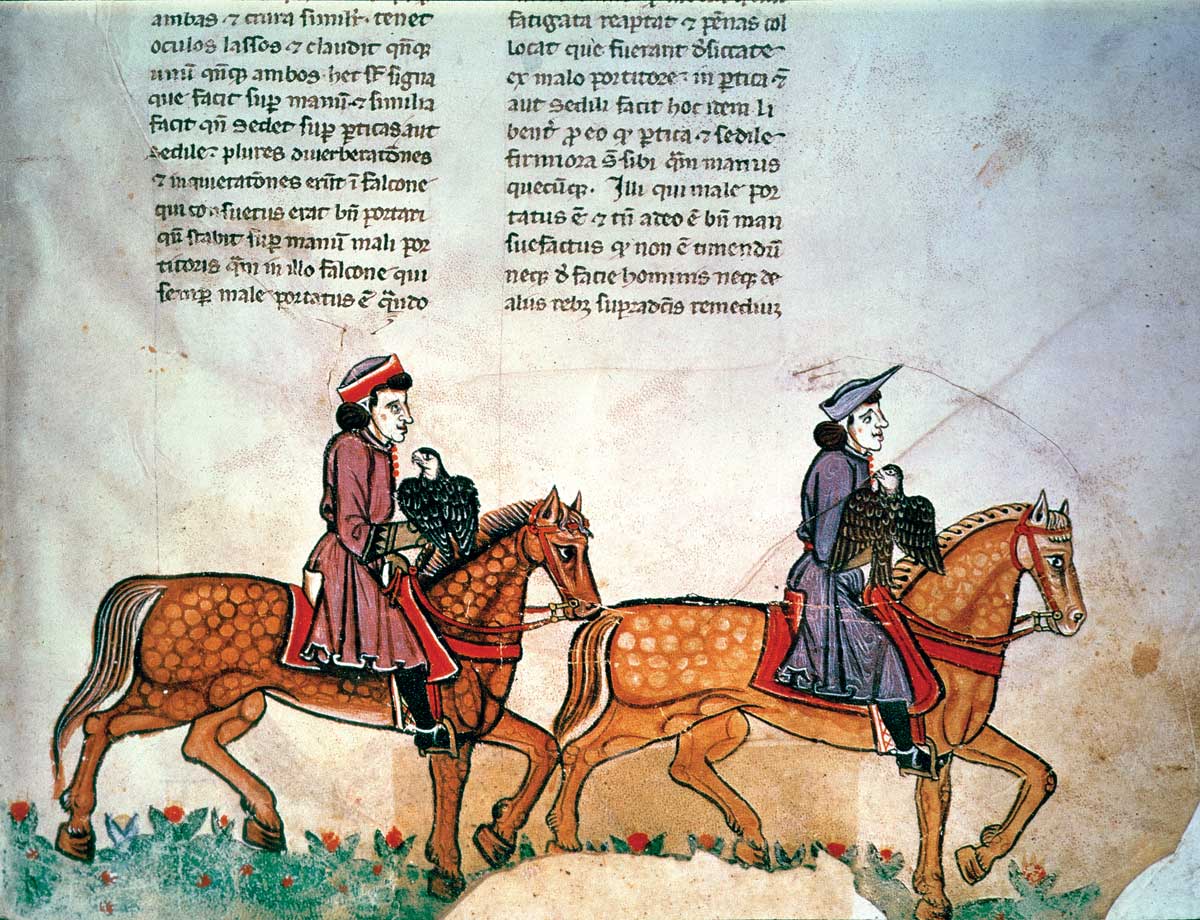A Philosophy of Falcons | History Today - 10 minutes read

In the winter of 1240 the Holy Roman Emperor Frederick II (1194-1250) was encamped in the snowy fields around Faenza. After crossing the Alps to put down a rebellion of Italian city-states three years earlier, he had found himself drawn into a protracted conflict with Pope Gregory IX. It had not been an easy struggle. He had been excommunicated, deprived of the imperial throne and repeatedly frustrated by a lack of men and money. A few months previously, however, he had launched a new campaign, which he hoped would change the course of the war. Ravenna, his first target, had fallen quickly. But Faenza was a different matter. Ringed by formidable walls, it was defended by a strong garrison and could count on regular supplies from its allies. To make matters worse, the weather was atrocious. By the time the first frosts set in, Frederick’s army was already running short of food and he was so hard up that he had to pay his troops with leather coins. The outlook was bleak. If Frederick failed here, his whole campaign risked collapsing – and, if it did, the pope would be quick to take advantage.
‘The noblest sport’
Yet, as the fate of his empire hung in the balance, the emperor’s thoughts were far away. Night after night, he would shut himself in his tent with a translation of Moamyn’s famous treatise on falconry and let his mind soar across the seas to the skies above Sicily.
Falconry was, by then, a common pursuit. Having been introduced to Europe from Central Asia or the Near East, it had been practised at least since the ninth century and, though found at most levels of society, had become a favourite pastime of those who aspired to noble rank. Knights were expected to learn how to hunt with falcons and hawks as readily as with horses and hounds; and even prelates are known to have carried them as a mark of status. Many books had already been written on the subject. Some of the most authoritative – like Moamyn’s Kitāb al-mutawakkilī – were in Arabic or Persian. But a growing number were being produced in Latin or romance vernaculars.
The earliest so far identified, by the ‘Anonymous of Vercelli’, has been dated to the mid-tenth century, but it was almost certainly not the first. Among the more recent, there was a work by the mysterious King Dancus of Armenia, an apocryphal letter to Ptolemy of Egypt and a treatise by Adelard of Bath. Going by hints dropped in later studies, it appears that books were also produced by William, the falconer of King Roger II of Sicily, and perhaps even ‘King Henry of England’. In fact, by the time of Frederick’s birth falconry had become so popular that it had been transformed into a literary trope of its own. In Der von Kürenberg’s Falkenlied (Falcon-song), the most famous example, the relationship between falcon and hunter becomes a metaphor for the lover and beloved.
But Frederick’s enthusiasm for falconry was unusual, even by the standards of his day. As David Abulafia has memorably put it, his family’s passion for hunting birds was ‘similar in intensity to the love of horses displayed by the house of Windsor’. It was said that, when the Mongol Khan wrote to Frederick demanding his submission, the emperor replied that he would gladly abdicate his throne if he could become the Khan’s falconer. Having learned the sport as a young man, he pursued it whenever and wherever he could. He acquired falcons and hawks from Greenland and Arabia, cranes from Malta and falconers from England. On his return from the Sixth Crusade he invited Arab experts to join him in Sicily; and, during his war with Gregory IX, he devoted almost as much attention to his birds as to the progress of the campaign. According to Charles Homer Haskins, no fewer than 40 of his letters deal with falcons and more than 50 falconers are mentioned by name. In the midst of celebrating a triumph in Cremona, he broke away to ask after his birds’ health; a few weeks later, he instructed his justiciars in Southern Italy to provide him with a good stock of cranes for training; and he repeatedly concerned himself with the payment of his falconers. He favoured falcons – especially lanner, peregrine, saker and gyrfalcons – but was also fond of goshawks and sparrowhawks. He built gigantic hunting lodges throughout his territories. According to the Florentine chronicler Giovanni Villani, his palace at Foggia was equipped with a specially designed park for training his birds and he constructed a gigantic Parco per Uccellagione at Gravina, which was used exclusively for rearing and housing the imperial falcons. And when he was not hunting, he studied falconry with an obsessive fascination. Whatever he could learn, he did. He sought out treatises wherever he could find them and commissioned Latin translations of Arabic works from leading scholars at his court.
Imperial scientist
Frederick was more than a gifted enthusiast, however. By the time the siege of Faenza had begun, he had already started gathering materials for his own treatise, De arte venandi cum avibus (On the art of hunting with birds). As he tells us, the idea had come to him many years before, perhaps as early as 1214, when he was just 20 years old. Whether he had already begun writing by 1240 is unclear, but it is not unlikely. What is certain is that the text was not ‘finished’ before 1244 and he continued to take notes until his death.
What drove Frederick to take up his pen was a profound dissatisfaction with the existing literature. As he explained in the preface, most contemporary works were marred by inaccuracy and incompleteness. Often littered with misleading statements copied from earlier writers, they were crudely written and left out more about the sport than they included. Since a corrective was clearly needed, Frederick therefore set out to write a more detailed and thorough study, capable of providing a full overview of falcons and their prey, based on empirical study rather than established ‘authorities’.
The text survives in two versions. One comprises two books and includes corrections by Frederick’s illegitimate son, King Manfred of Sicily; the other, six. Found in manuscripts now in Bologna, Rome, Paris, Valencia, Rennes and Oxford, this longer version covers the habits and nature of birds, the capture and training of birds of prey, the use of lures, hunting cranes with gyrfalcons, herons with the saker falcon and other water birds with smaller breeds. It is clear, however, that this represents only a portion of its final, or intended, contents. The preface to Book Two promises a discussion of moulting and avian diseases, while Albertus Magnus later referred to the emperor’s comments on hawks and black falcons, none of which can be traced to extant manuscripts.
Frederick’s relentlessly empirical approach reveals him to have been a careful student of Aristotle. Three of Aristotle’s biological works (Historia animalium, De generatione animalium and De partibus animalium) had been translated from Arabic versions, together with Avicenna’s commentary, at Frederick’s court by Michael Scot, and Frederick appears to have read them all. He cites them frequently in De arte venandi cum avibus and, like many of his contemporaries, seems to have been deeply affected by Aristotle’s insistence on the value of systematic observation.
Yet so deeply did Frederick admire Aristotle’s empiricism that he was even prepared to use it against the philosopher himself when necessary. Through his own ‘hard-won experience’, he discovered that ‘the deductions of Aristotle …were not entirely to be relied upon’. Being ‘ignorant of …falconry’, like all ancient Greeks, Aristotle had quoted many other authors ‘whose statements he did not verify, and who, in their turn, were not speaking from experience’. This had led him into all manner of errors, for which Frederick did not hesitate to upbraid him. The text is littered with scathing parentheses (‘contrary to what Aristotle says…’; ‘not as he has it’) dripping with the disdain of an experienced huntsman and the contempt of a dedicated, if autodidactic, ornithologist.

This was a significant step and marks Frederick out as a genuinely original natural philosopher. Whereas most of his contemporaries deferred to Aristotle’s authority, even when it conflicted with their own experience, Frederick bowed to no one, either in science or politics. To him, the art of falconry was an exercise in realism, which brooked no hedging or compromise. He gave no quarter to fantasy or fable and resisted the temptation to recount hunting tales. He mentions no ‘birds that got away’ and avoided any exaggeration. For him, only observation and experience mattered. As he saw it, his task was merely ‘to show those things that are, as they are’.
This allowed him to make some remarkable leaps. Just as he reputedly cut prisoners’ stomachs open to study the effects of exercise on digestion, he had the eyes of vultures seeled (sewn shut) to test whether they could find their prey by smell alone. He explored the intelligence of ducks and cranes, proved that cuckoos do not build nests of their own and experimented with artificial means of incubation. Puzzled by the long-standing myth that barnacle geese emerged from goose barnacles on ‘dead wood’, he also ‘sent special envoys to the north to bring back specimens’ and concluded that, while the barnacles did look a lot like the goose eggs, ‘the shell-like formations clinging to the rotten wood … bore no resemblance to any avian body’.
Sovereign freedom
The impact of De arte venandi cum avibus was considerable. Having been captured at the battle of Parma in 1248, Frederick’s own copy may have been offered to Charles of Anjou in 1264 or 1265, while the text itself was cited approvingly by the philosopher Albertus Magnus. A French translation, commissioned by Jean de Dampierre, appeared within 50 years of Frederick’s death. And, in the early 14th century, Frederick’s discussion of seeling – absent from other contemporary works – may even have inspired Dante’s harrowing description of the punishment inflicted on envious souls in the Commedia. Thereafter, a number of lavish manuscript copies were made, chiefly for aristocratic readers; and, in a sign of its enduring popularity, a printed edition was produced in Augsburg by Marcus Welser in 1596.
As an artefact, De arte venandi cum avibus offers a remarkable insight into the culture of falconry at Frederick’s court. Its dense, closely argued pages testify to the rich exchange of commerce in animals, people and ideas throughout the Mediterranean and Atlantic worlds – from the frozen wastes of Greenland to the burning sands of the Levant. It provides a unique insight into the meeting of scientific learning and aristocratic pursuits. And its legacy is witness not just to the lively transmission of naturalistic texts throughout Europe but also to the fertile interplay between zoology and literature.
What it says about Frederick himself is arguably even more telling. Although some 20th-century historians, such as Ernst Kantorowicz, were inclined to present Frederick as a towering figure, who straddled the earth like a colossus, he appears in the pages of his work as an altogether more human figure: brilliant, inquisitive and self-assured, to be sure, but also cautious, uncertain and tormented. Weighed down by the worries of worldly rule, he finds solace in the skies above – perhaps seeing in his falcons a sovereign freedom of which even he could only dream.
Alexander Lee is a fellow in the Centre for the Study of the Renaissance at the University of Warwick. His latest book, Machiavelli: His Life and Times, is now available in paperback.
Source: History Today Feed